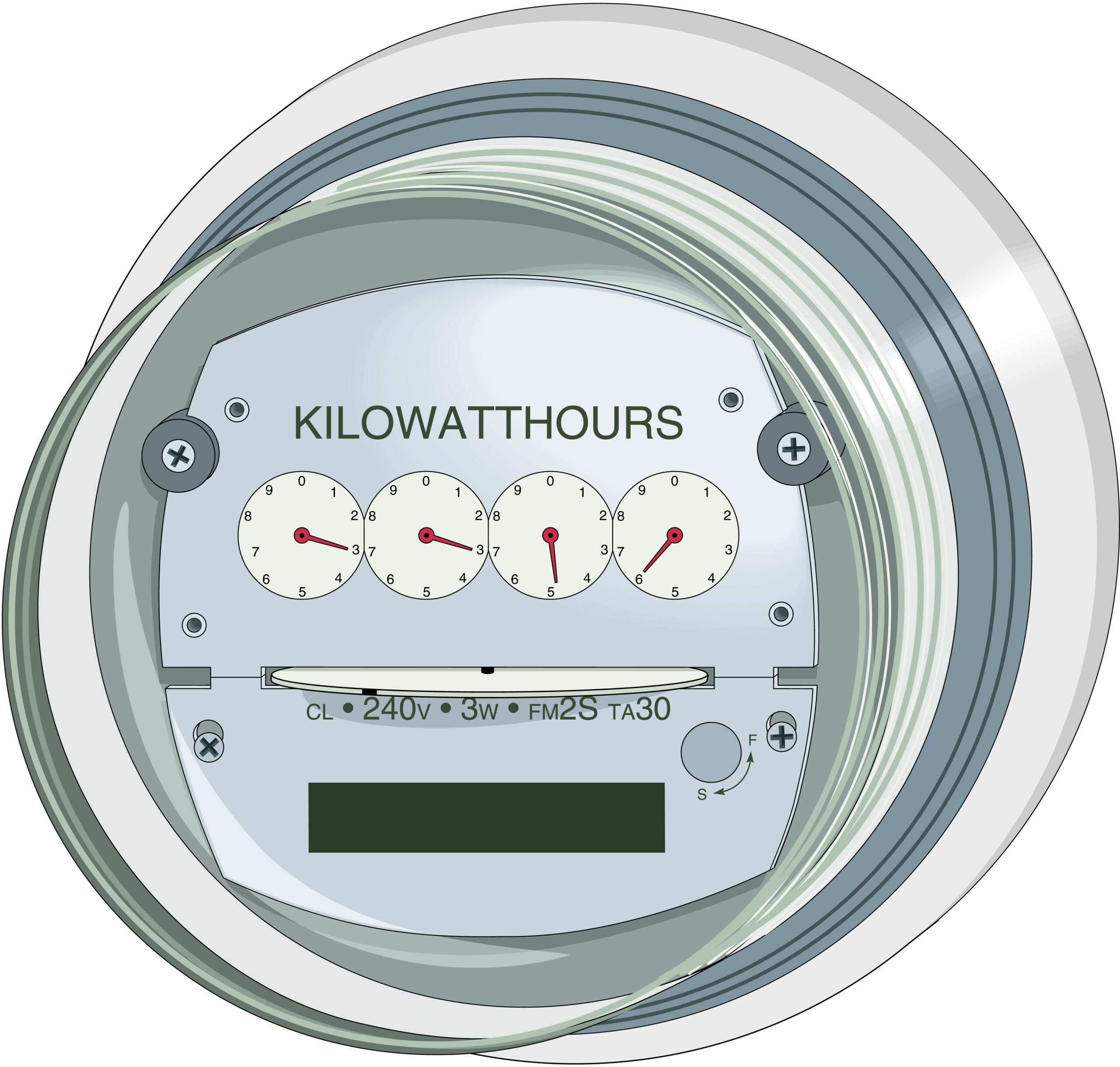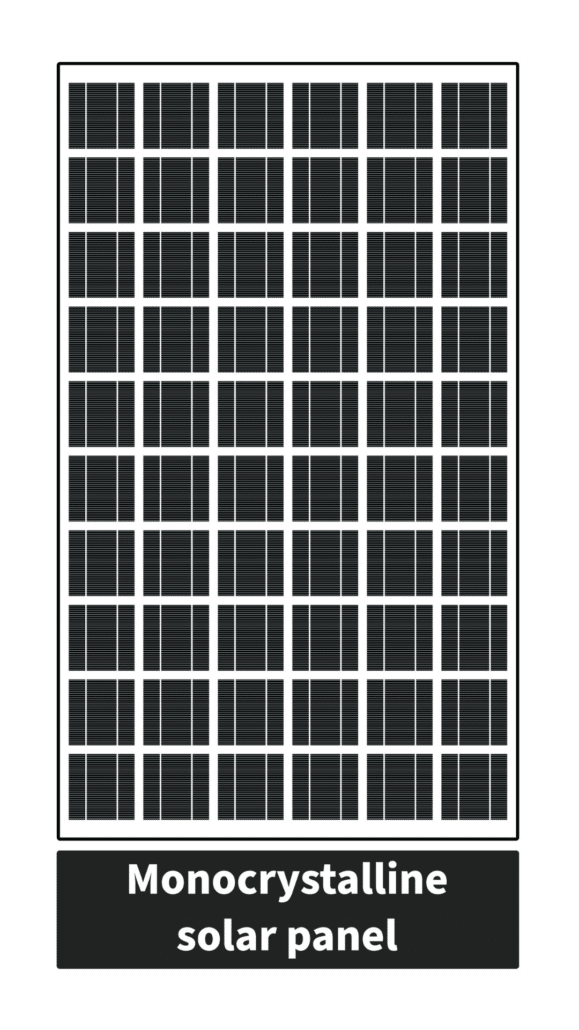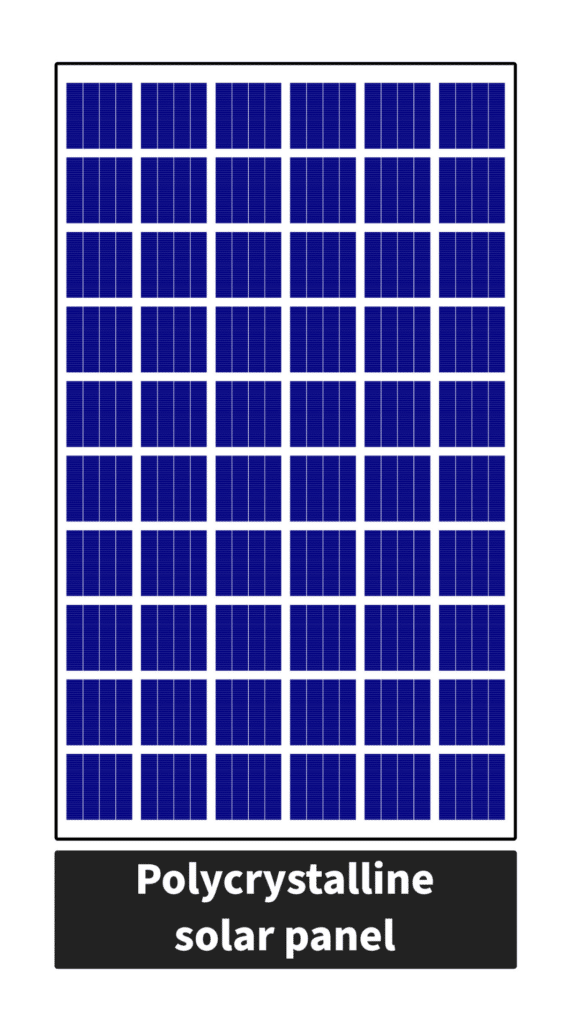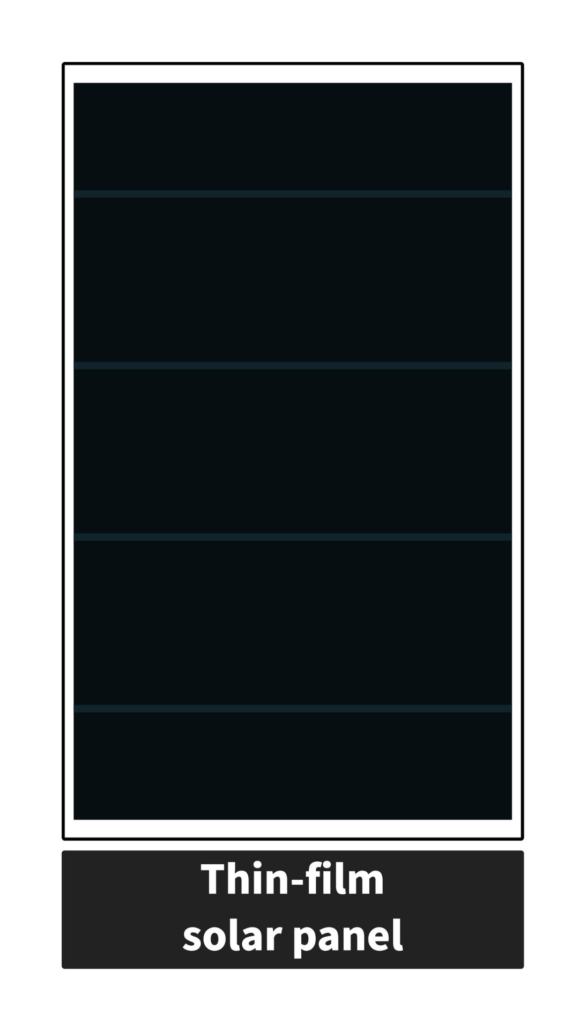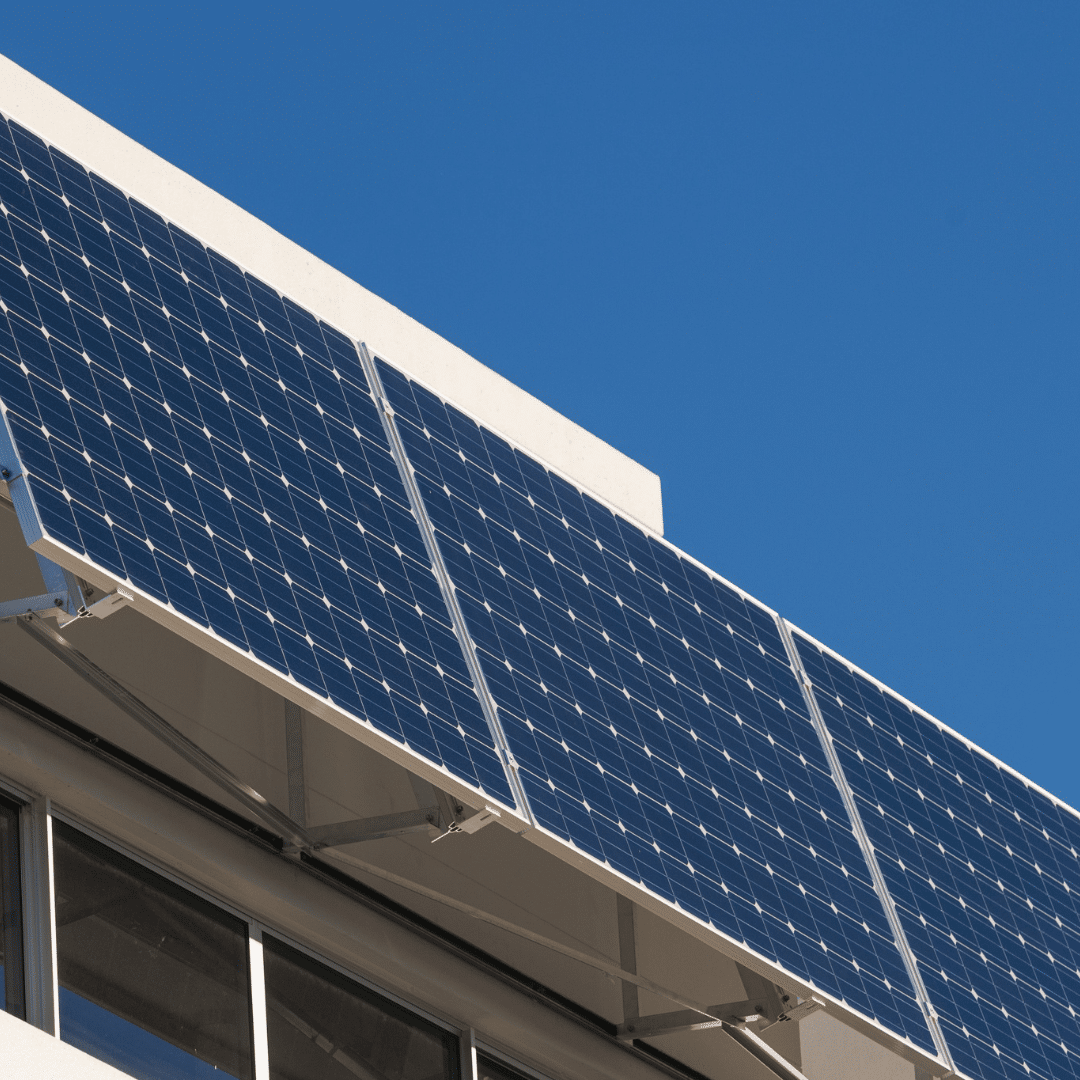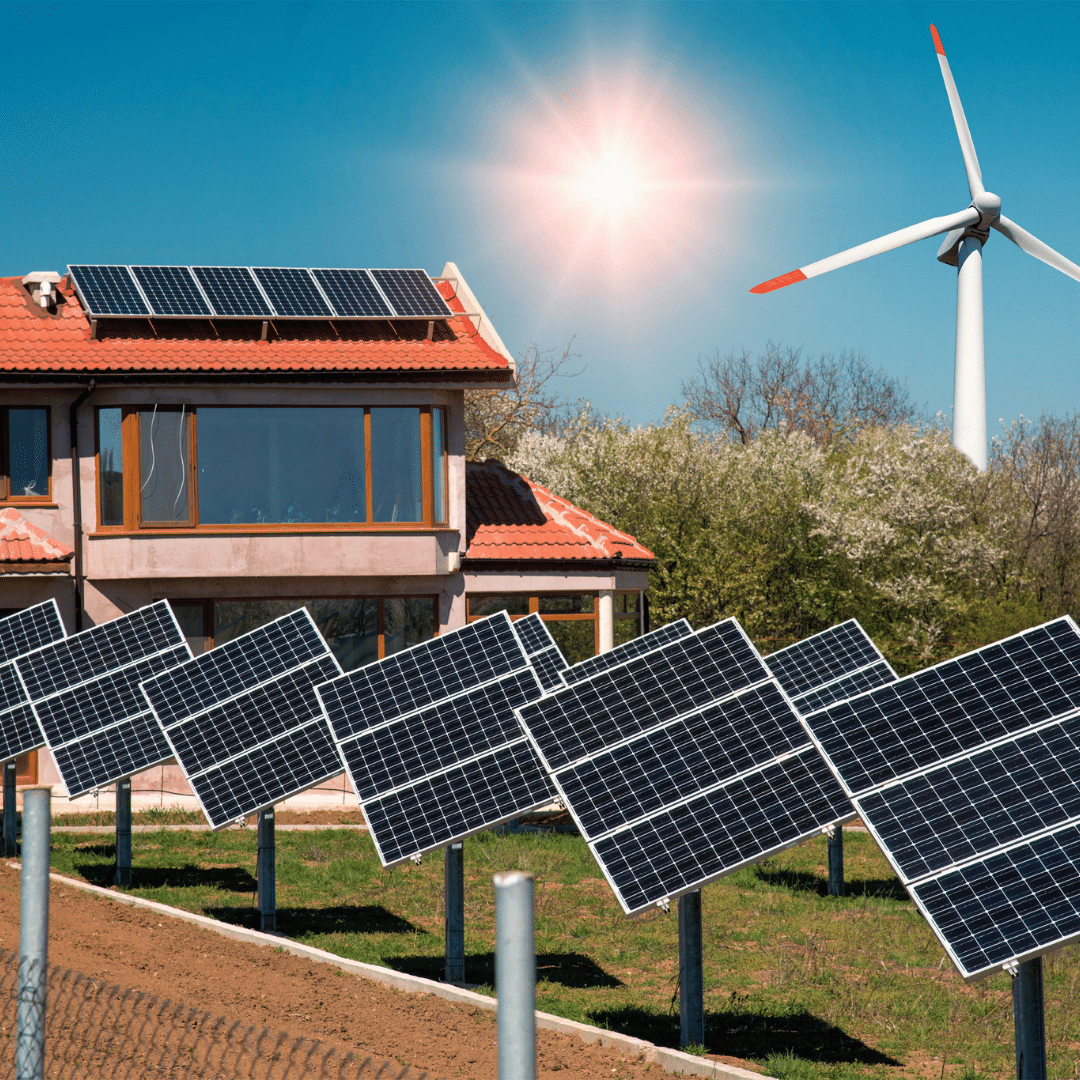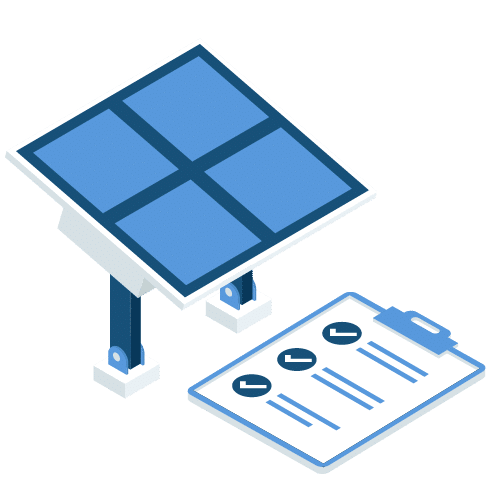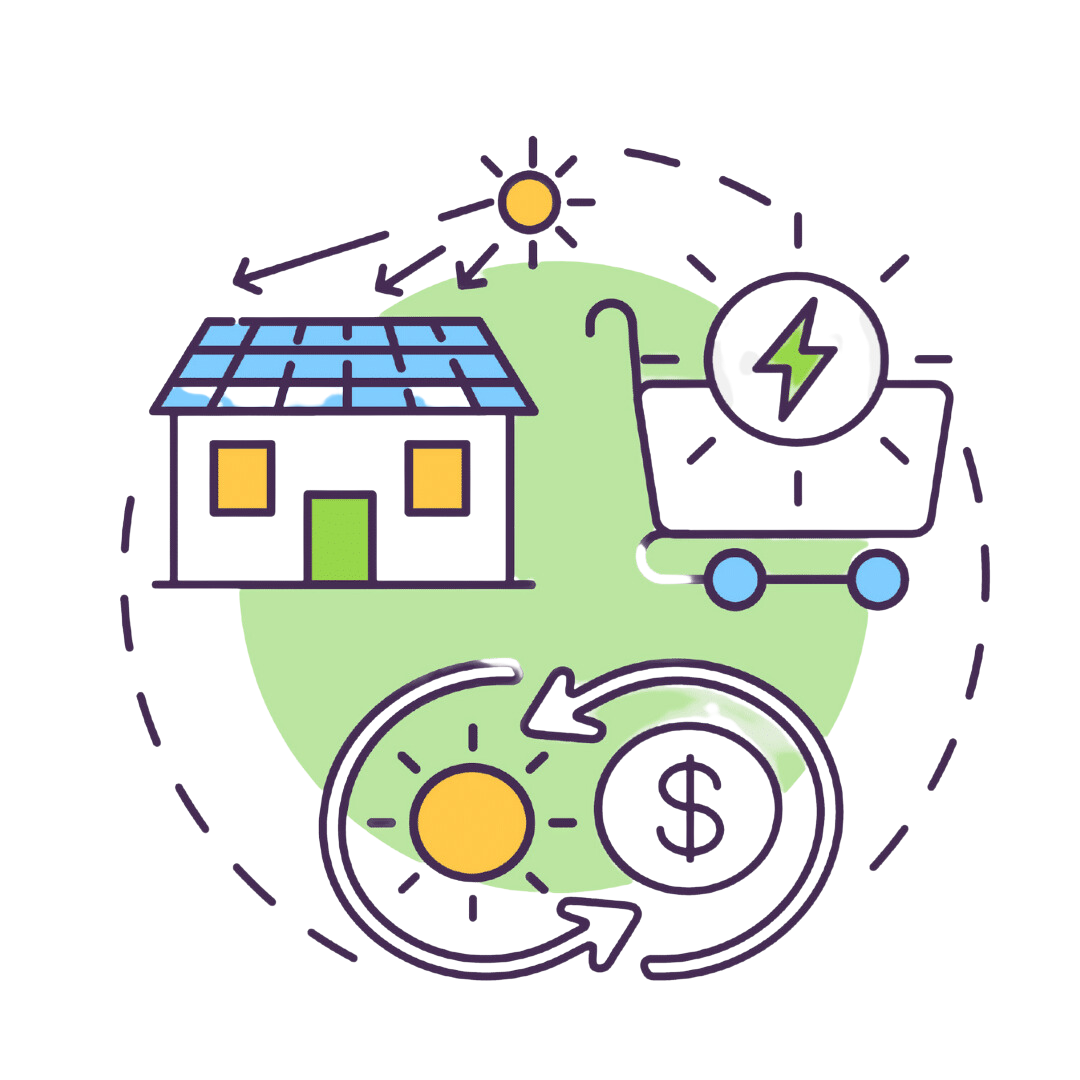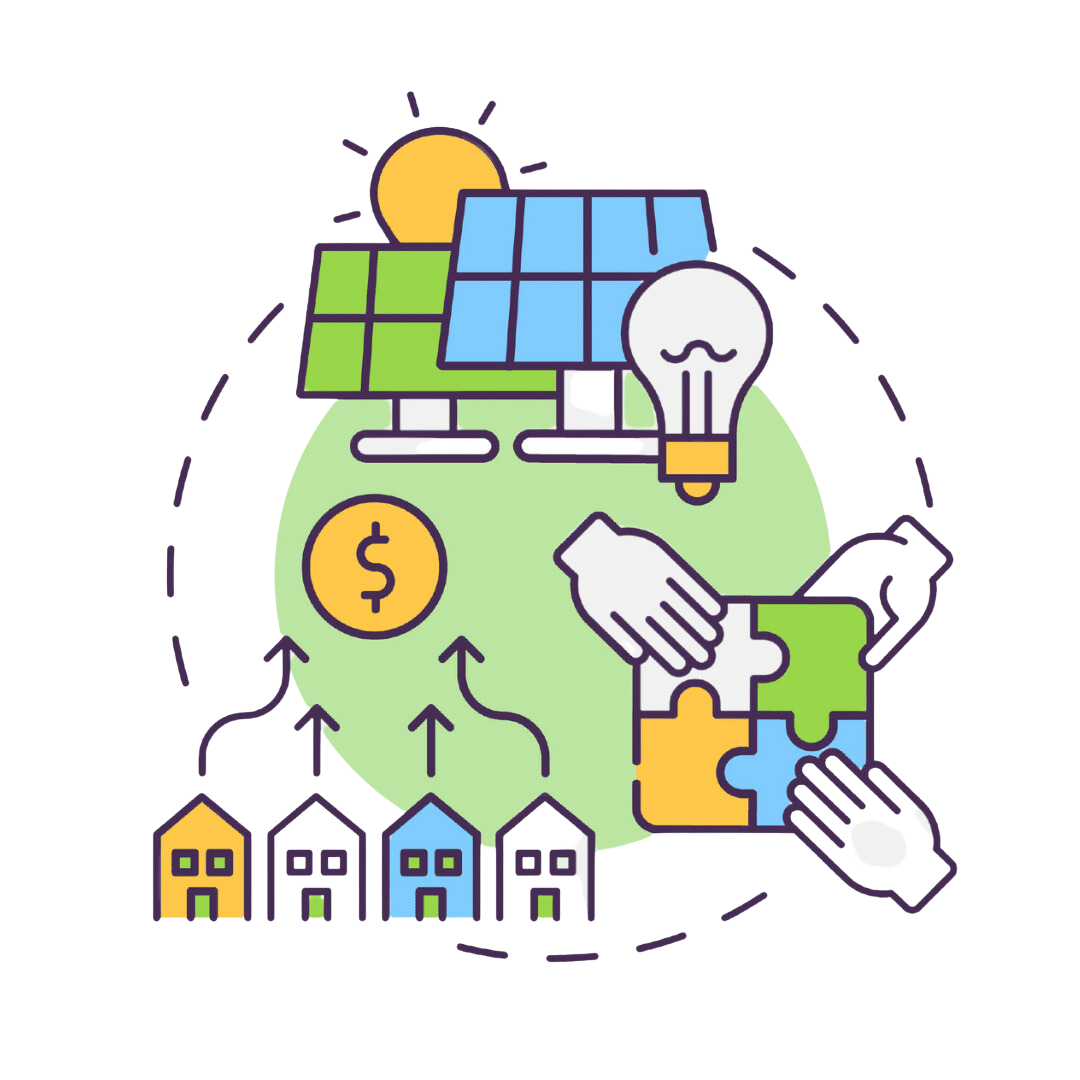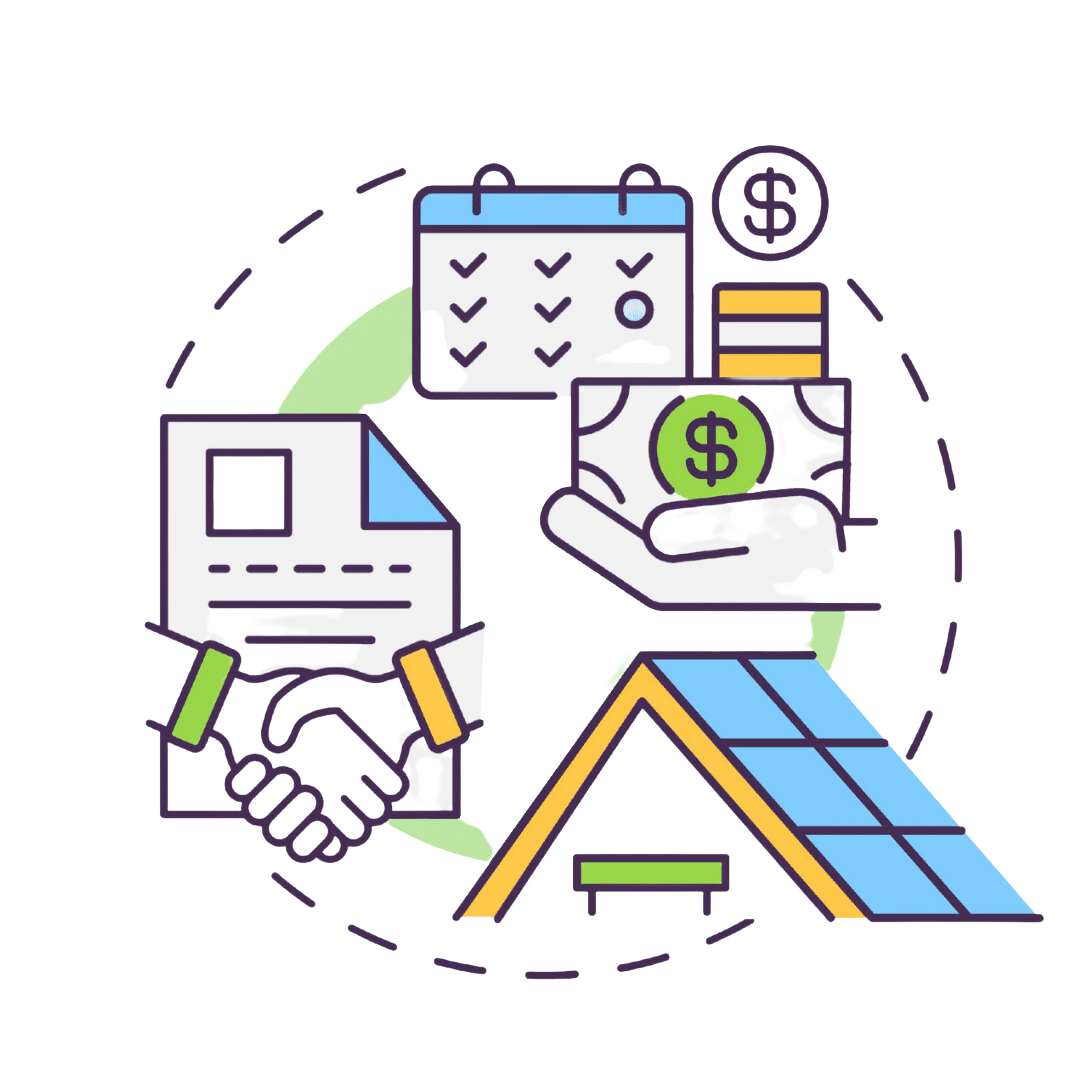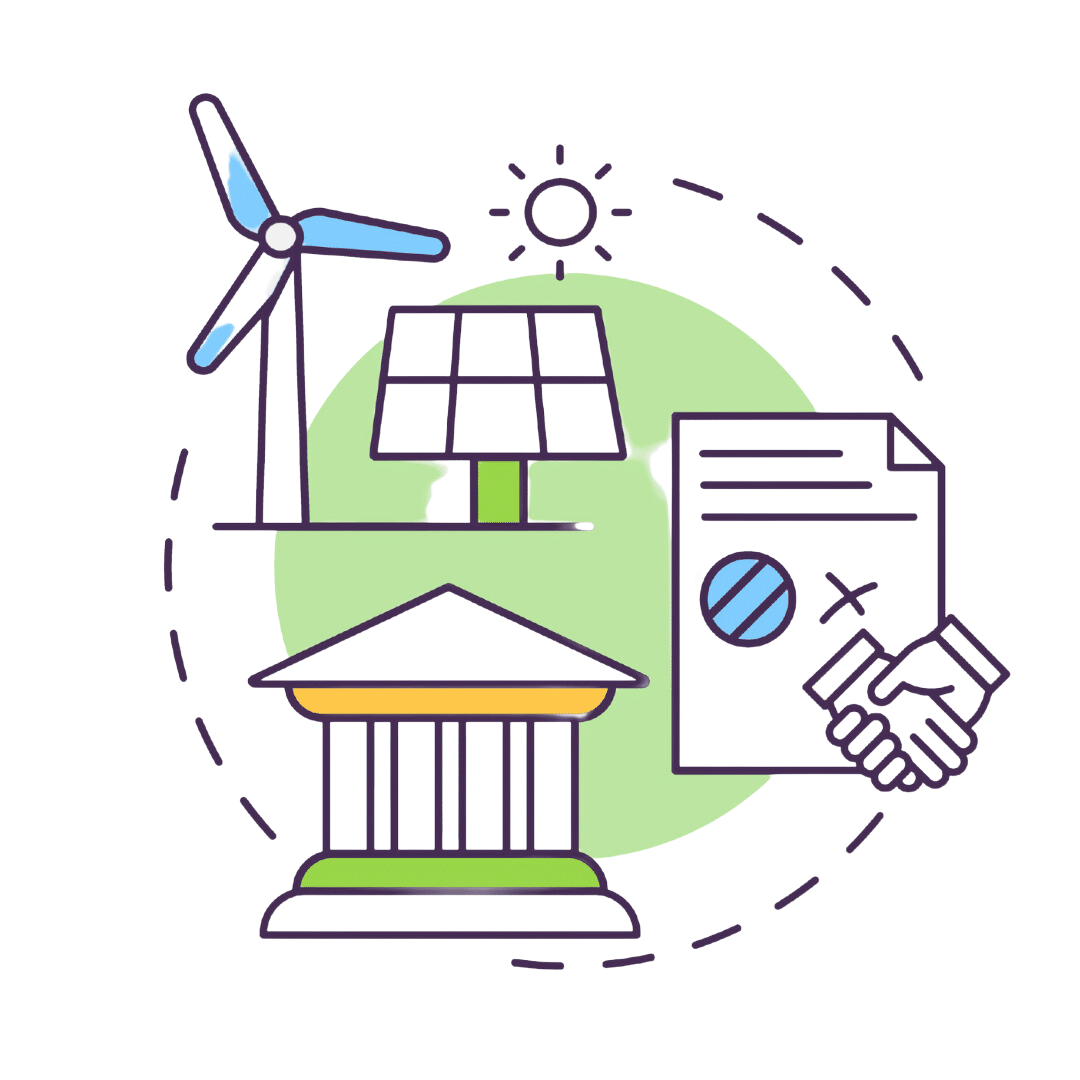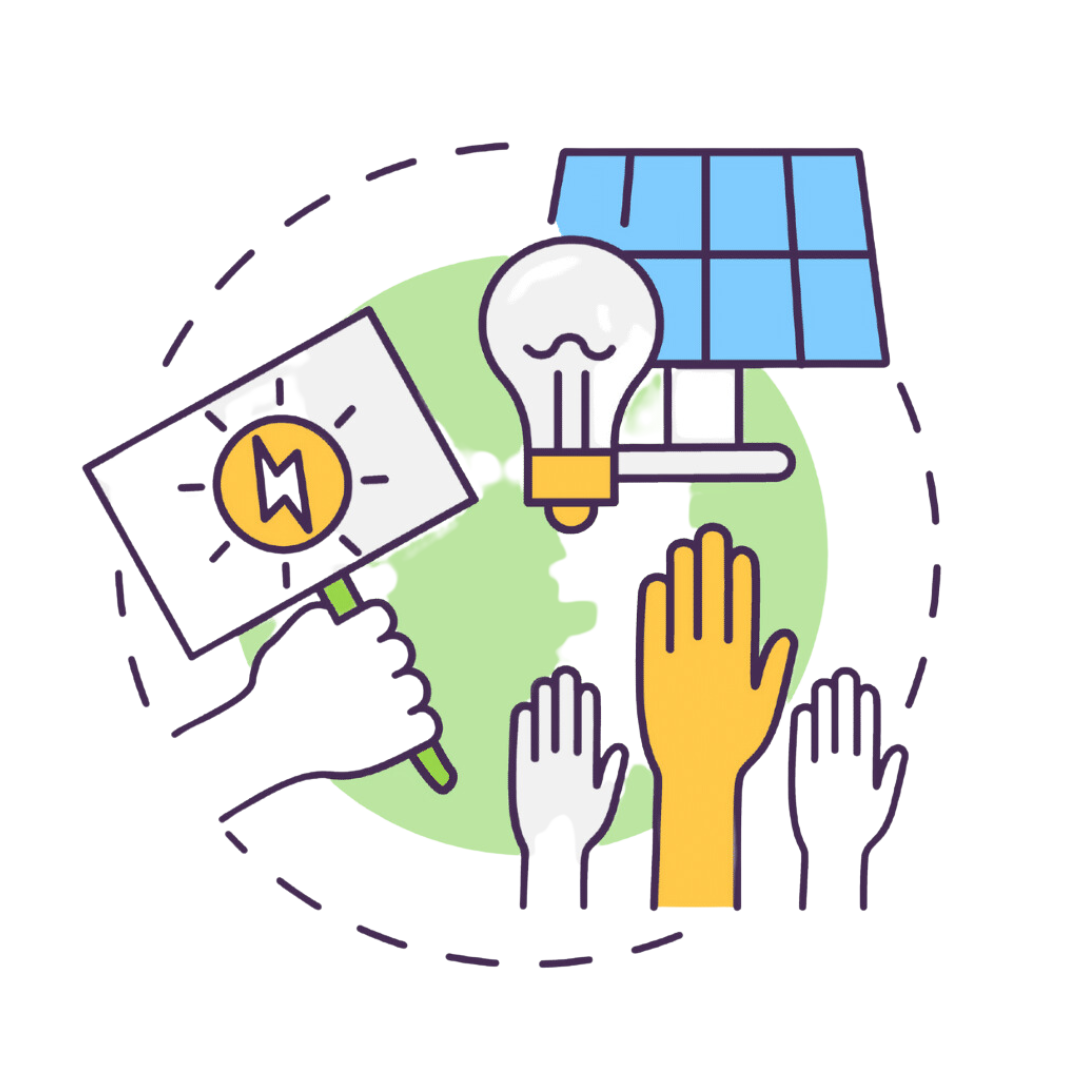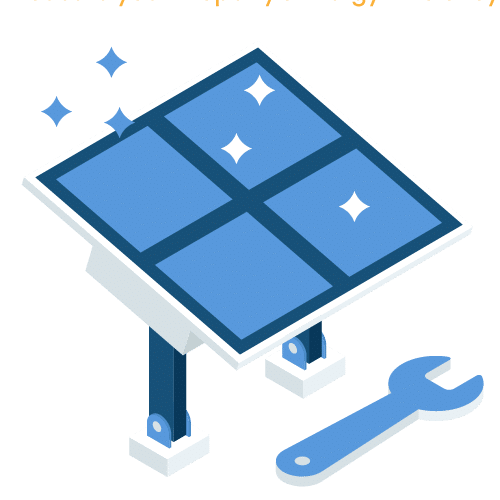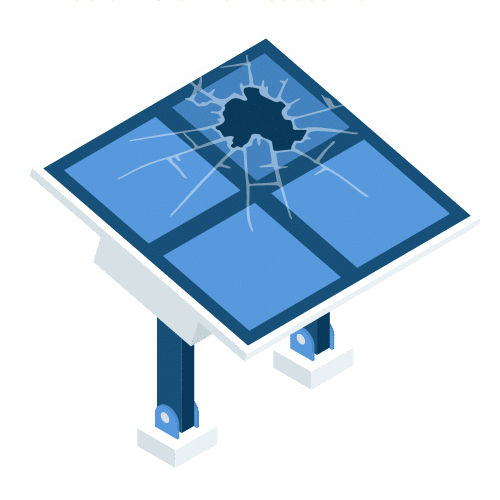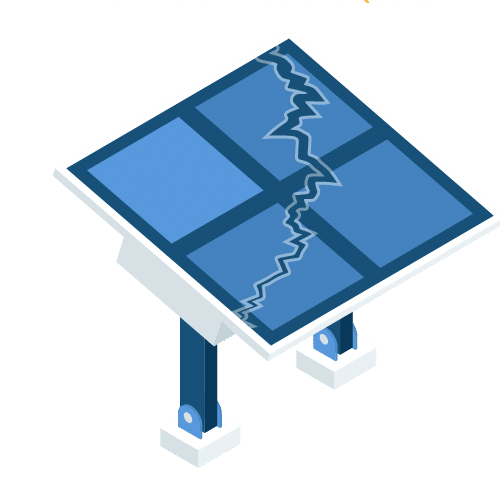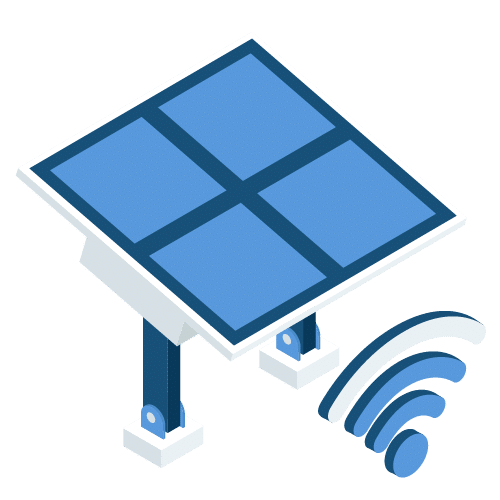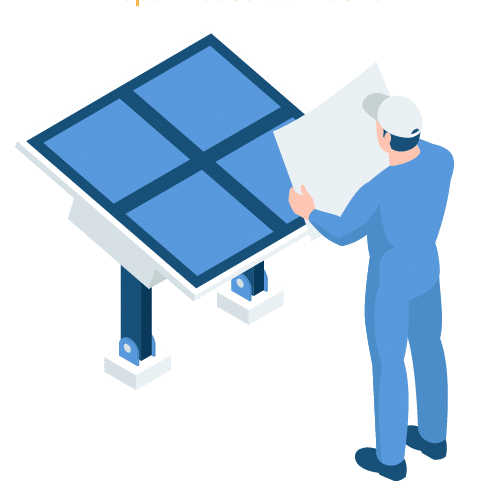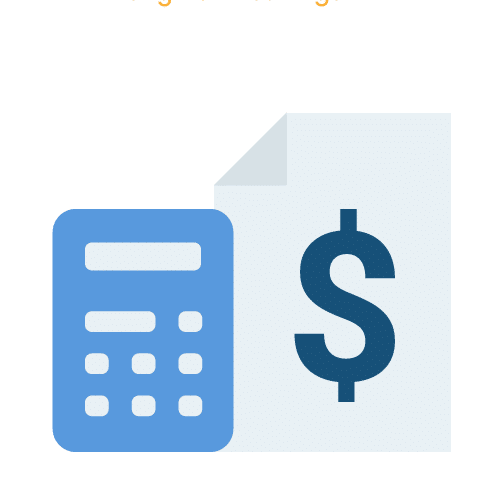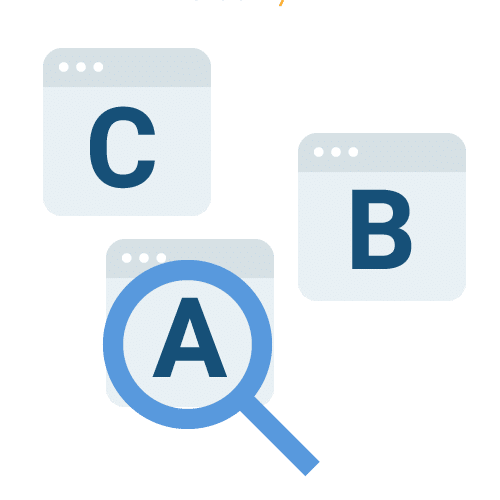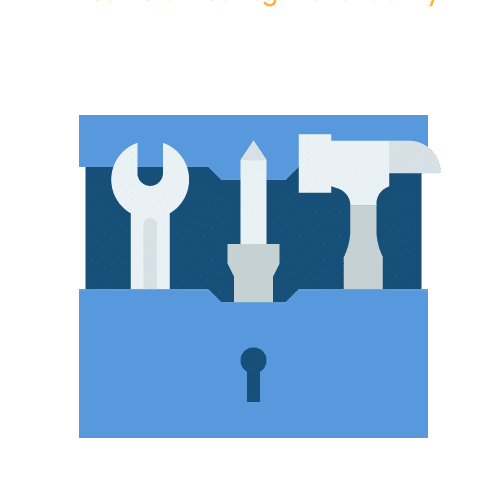As of writing, there are more than a million solar installations in the USA. More homeowners are making the switch to solar now that the operating costs get increasingly cost-efficient per year. Not to mention, solar electricity is enormous, renewable, and sustainable.
Case in point: just one hour of the summer sun in the noontime can already cover the country's annual electricity demand, according to the US Office of Energy Saver. With excellent solar resources scattered in each state, a home solar electric system continues to rise.
Cost of 2 kW Solar System |
|---|
$8,000 – $10,200 |
Cost of 10 kW Solar System |
|---|
$40,000 – $48,500 |
Cost of a standard 6 kw System |
|---|
$20,200 |
The Basics of Home Solar Power
If you're wondering, "how does a home solar panel work exactly?" or “how much do solar panels cost?” – we will cover everything you need to know in this article, including the necessary financial aspect involved.

When sunlight reflects onto a solar panel, its energy will be absorbed by the PV cells in the solar panel. Consequently, this gives off electrical charges that move accordingly to the internal electrical field.
Now that we've covered the basics, let's discuss other essential factors you need to consider in planning to switch your home electricity needs to solar. It includes the annual solar panel maintenance costs, solar installation expenses, and other related upkeep.
How Much Does Solar System Cost?
To many homeowners, the upfront solar panel installation cost can be rather expensive. Generally, you can expect to shell out somewhere between $20,250 to $40,500 for a home solar installation. Prices may vary depending on several factors.
A 2 kW set-up is priced at $8,000 to $10,200, while a 10 kW system runs for $40,000 to $48,500. A standard 6 kW system costs $20,200 on average – including labor expenses, equipment, and permits.
The hefty sum makes it a considerably significant financial investment for many homeowners looking into home improvement projects. Your new solar system's overall costs can be broken down into three main categories:
For equipment. It includes the upfront solar panel price, including batteries, inverter, mounts, and wires.
For local installation permits and the labor costs of professional services.
For the operation of the solar panel for home, such as maintenance, monitoring, and overhead expenses.
It's important to get quotations from several companies to determine the average price in your area. In most cases, you will be taken aback by the difference in standard offers, considering the soft costs involved.
Those who take time in browsing the solar panel market may end up saving thousands on installation costs from large contractors and small companies.
If your situation is more challenging to work with, such as a poor roof surface, your installation costs will also increase accordingly.
What size of solar system do I need?
After confirming that your home is suitable for a solar panel installation, you will need to determine the best system size to run your house without any problems next.
Remember that the ideal size of solar panels that fit your home needs will also greatly determine the total costs.
Energy Usage
Some factors to consider are the amount of solar you need. You can determine the upper limit based on your home's average energy consumption for the previous 12 months.
Take a look at your electric bills to determine your annual energy usage pattern. If you cannot check your previous bills for the past 12 months, get an estimate based on your peak winter and summer season energy usage. It is the solar power amount you typically need to power your home efficiently.
Available Space
You will need to work around your home's limitations, especially your roof size. Ideally, pick a size that fits nicely on the available space in your roof or on the ground.
These are just a couple of factors that affect your ideal solar system size. Keep these in mind to approximately estimate the size you need. Some other important factors to consider are as follows:
What is a Kilowatt Hour (kWh)?
The amount of electricity a solar panel produces is measured in watts and kilowatts (1,000 W = kW). You’ll pay anywhere from $0.90 to $2 per watt for the solar panel roof cost. A home solar system cost will be approximately $3.50 to $4.70 per watt with labor and other factors.
Suppose your home spends 12,000 kWh on annual electricity needs. In that case, a 9.2 kW solar panel system is ideal to meet your home power needs. (12,000 divided by 1,300 is equivalent to 9.2).
There are also a few general benchmarks you can use to estimate your system’s potential output.
Daily Output
If you want to get into specifics, you can measure the average daily amount of electricity in kilowatt-hours (kWh) produced by solar panels for home.
Keep this formula in mind:
Size of one solar panel (in square meters) multiplied by 1,000
That figure multiplied by the efficiency of one solar panel (percentage as a decimal)
That figure multiplied by the number of sun hours in your area each day
Divide by 1,000
Example:
Panel has a size of 1.6 square meters:
6 x 1,000 = 1,600
Panel is currently 20% efficient:
1,600 x 0.2 = 320
The location of your property gets an average daily 4.5 sun hours:
320 x 4.5 = 1,440
Divide by 1,000:
1,440 ÷ 1,000 = 1.44 kWh per day
Monthly Output
Now, calculating the average monthly total involves taking the daily kWh figure and multiplying it to 30 (with one month having 30 days on average).
1.44 kWh multiplied by 30 = 43.2 kWh on a monthly basis
Average Output Per Square Meter
Another considerable benchmark is to calculate your solar panel system’s average output on a square meter basis. Many solar panels for home use systems start at 4 kW, with 16 panels at around 1.6 square meters (m2) in size. It is commonly rated to generate 265 watts of power given the most ideal conditions for harnessing solar energy.
The general formula to determine the approximate output per square meter basis:
Number of panels multiplied by the solar panel system’s capacity
Capacity divided by the total system size (computed by multiplying the number of panels and the size of each individual panel)
Example:
16 panels each with 265 W:
16 x 265 = 4,240 kW capacity
Total size of the system (16 panels overall with a size of 1.6 m² each)
4,240 ÷ 6 = 165 W per square meter
Nowadays, most residential solar panels are designed to produce 250 to 400 watts in an hour. Domestic solar panel systems typically start at a capacity of between 1 kW and 4 kW, just enough to power necessities in your household.
Factors Affecting the Cost of Solar Panel Installation
Several factors will come into play in determining the total solar panel installation cost. Hence, there’s no one price that fits all as every system's expenses will be unique given each home has different needs.
Let's discuss some of the most prominent factors that affect the average cost to install solar panels:
Solar Panel Type
In general, there are three common types of solar panels for residential use. Each type has its advantages and drawbacks, such as price points, durability, and efficiency.
To select the best solar panel type to meet your home energy needs, refer to the table below for a quick overview:
Solar Panel Type | Average Price per Watt | Average Life Expectancy |
|---|---|---|
Monocrystalline | $1.30 - $2 | 25 - 35 years |
Polycrystalline | $0.90 - $1.30 | 23 - 27 years |
Thin Film | $1.30 - $2 | 14 - 17 years |
Monocrystalline
This solar panel type is known to be long-lasting and highly efficient. It will cost you $1.30 to $2 per watt for the panel. If you have a 6 kW system at home, the expenses will amount to $8,000 to $12,000 on average.
Many homeowners opt for this type as it also takes less space than other options. If you're wondering how it works, the solar cells are made of pure silicon to convert sunlight into electricity. This material is highly durable, with an average life expectancy of 25 to 35 years.
Polycrystalline
Though this material has lower efficiency than mono, it is another great space-saving option to consider. On average, polycrystalline panels are priced at $0.90 to $1.30 per watt.
It is easy to distinguish them from other panel types since they take on a visible blue color. For a standard 6 kW system, this will cost you around $7,300 and $8,100. For its production process, the silicon crystals are melted to form solar cells– and although it makes the silicon less efficient and pure, it reduces waste and saves on production costs.
Thin-film
If you're looking for a cost-efficient solar panel type, thin-film panels cost $1.30 to $2 per watt. The material is considerably flexible and versatile, but it has the shortest life expectancy among the three (14 to 17 years on average) and requires the most space to efficiently provide power to your home.
It is made from photovoltaic material layers on glass or metal. It has a high heat tolerance– which many homeowners consider to be a great selling point. High-end solar panel systems offer you more efficiency at a higher cost. It is due to the expensive material price for the repair and intricate extra care involved.
Location
The majority of solar panel installations are done on the roof. However, some have a ground set up or at the side of your home. With that in mind, your contractor's labor rate may increase depending on the system's ease of access.
Should they require more prolonged project duration or more laborers to install your home solar panel unit, it's best to prepare your budget accordingly.
State
Accordingly, the per-watt price of solar panel installation will vary from one state to another at $3.40 to $4.80. Several deciding factors include:
In the west, Hawaii has a relatively high rate at approximately $3.85 per watt. Meanwhile, in the south, Georgia has a lower cost at $3.37.
Labor
Throughout the country, the general price of labor per watt is around $0.67. You can expect your labor expenses to increase according to the various system sizes.
A standard 6 kW solar system unit will cost you approximately $4,185 on labor, while a smaller 2kW unit will have you spending $1,350 and a larger 10kW solar unit at $6,750 labor costs.
Several other factors, such as your roof grade, can also affect the installation costs. If you have a steep roof that requires more time and safety precautions to work with, it will hike up the total expenses accordingly.
Permit & Inspection Fees
Since installing a solar panel system can be rather complicated and risky, proper protocols are strictly implemented. Several local governments impose a strict set of permits and inspections to ensure every solar system project will be safe.
For standard residential solar installation, permits will cost you a few hundred dollars on average. In Colorado, the residential permit fee will cost a maximum of $500. Meanwhile, it runs at approximately $450 in California.
The local government also offers generous subsidies on solar installation permits in several states.
Solar Permit
Depending on your state council requirements, local zoning laws, and other related legislation, the process of securing a solar permit may vary from one homeowner to another.
Typically, you will need to secure an electrical permit, construction permit, and a solar permit at the nearest government office. It requires an application form, site plan, equipment plan, electrical plan, and an owner-builder verification form, among other requirements.
If your property belongs to a delegated historical area, you may need to secure the permission of a local historical commission. Suppose you live in a gated property, then it's best to consult with the homeowner's association first with your solar panel installation plans.
Inspection
All solar panel installation projects will require inspections, at least twice before the project commences, and another post-installation schedule. It is done to ensure a stable electricity circuit for your energy needs. An inspection will also determine if your property's roofing is safe and strong enough to support the solar energy system.
Once the installation project is deemed complete, you will typically need another successful inspection before the system is allowed to run. Note that large-sized systems will typically require a longer inspection time to ensure peak efficiency. A local government representative may conduct this final inspection, ensuring that all safety regulations are in place.
Afterward, your utility company will need the certificate to allow grid interconnection through net metering.
Inverter
Generally, solar inverters for an average-sized system will cost $2,025. It accounts for roughly 10% of the upfront equipment expenses (or less), at approximately $0.24 to $3.9 per watt.
If you notice your inverter expenses take more than 10% of the installation costs, it would be best to talk to your contractor so they can explain the breakdown of the costs in detail. It may only be one of two things: the inverter unit comes at a high price, or their professional construction costs are increased depending on your home needs.
Mount Type
Depending on your solar panel mount type, it will generally cost you somewhere between $15 and $3,000 per piece. Keep in mind that the cheapest option may be less efficient and durable than the high-end ones.
There are three main types of solar mounts: fixed, adjustable, or motorized tracking. Let's discuss the difference between the three below:
Fixed
Fixed-type mounts will cost you $15 to $20. They are entirely stable and stationary, so you cannot adjust them at a whim if you want to change your solar panel system's sunlight capture. Regardless, they are the most cost-effective mount type in the market today. Consider fixed type mounts to be ideal in areas with consistent sunlight exposure.
Adjustable
An adjustable mount is priced at $68. These can be easily tilted if you want your system to maximize its energy production. If the sunlight is quite intense, you can effectively capture, soak, and store more energy by adjusting the mount in a specified direction. They cost more than fixed-type mounts, but the higher price comes with increased efficiency. In the event of severe weather conditions, you may also opt to adjust it flat to avoid damage from strong winds.
Tracking
Motorized tracking mounts are priced at $675 to $4,050. This high-end mount type has moving parts to follow the sun's arch to maximize energy production. Although the upfront costs are considerably a hefty sum– this type offers a more guaranteed return on investment given it makes the most out of every sunlight exposure.
This type also requires additional maintenance and upkeep to ensure the moving parts are in good working condition. You may spend up to $3,375 in tracking mount-related repairs, while you will only need to tighten the bolts for fixed and adjustable type mounts regularly.
Solar Roof Shingle and Tile
Opting for solar (photovoltaic) shingles will give you panels that function similarly to standard roofing materials. The catch is, they can generate electricity for you to use. On average, this will cost you anywhere between $54,000 and $108,000.
If you're big on aesthetics and functionality, solar shingles are a significant home investment. You can count on its durability and energy efficiency.
The total costs will depend on the location of your property, home size, and the average amount of sunlight exposure.
Roof Type | Installation Costs with Solar |
|---|---|
Shingle Roof | $28,350 - $54,000 |
Tile Roof | $31,050 - $70,200 |
Wood Shingle Roof | $26,500 - $33,750 |
Tesla Solar Roof | $54,000 - $108,000 (With Battery) |
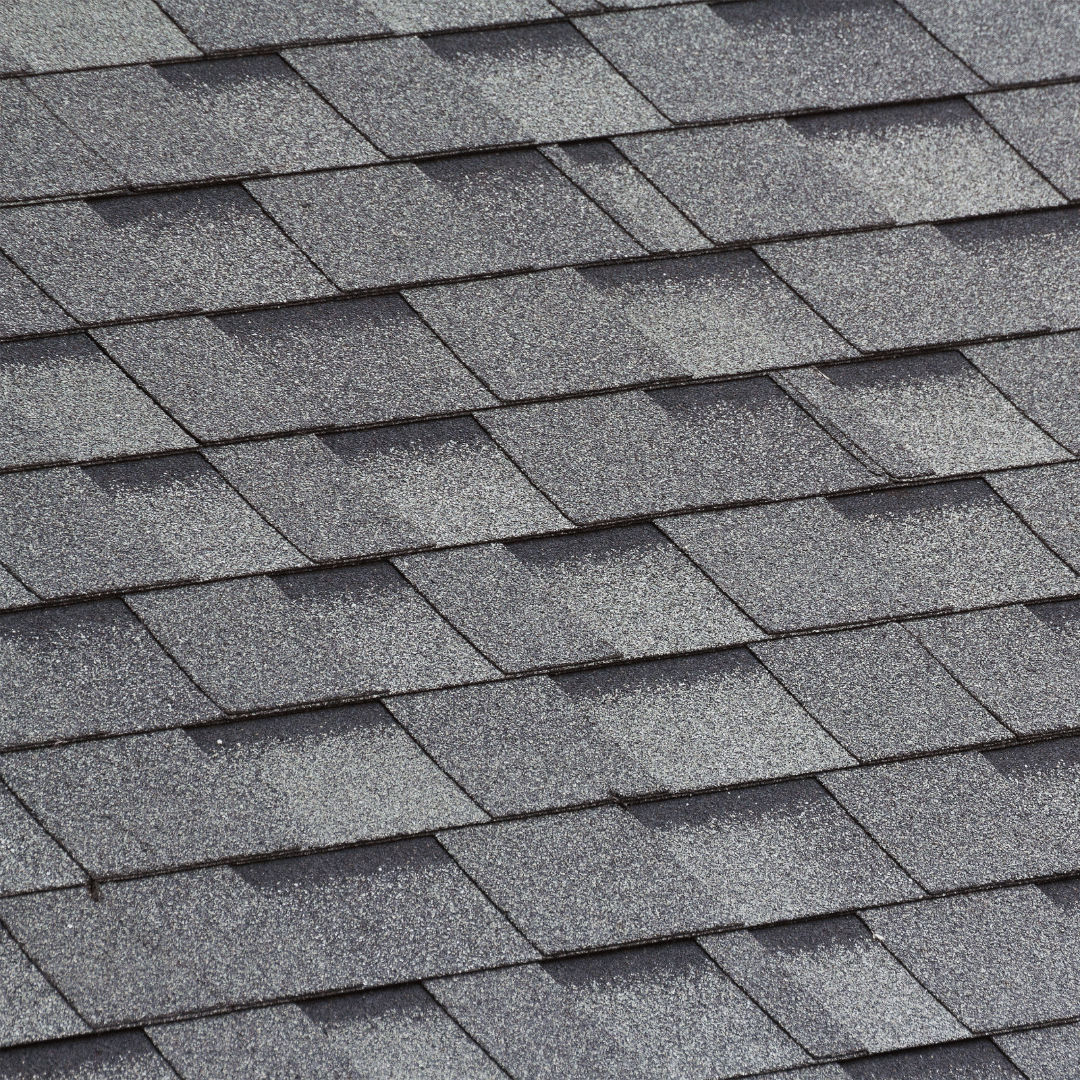
Shingle Roof
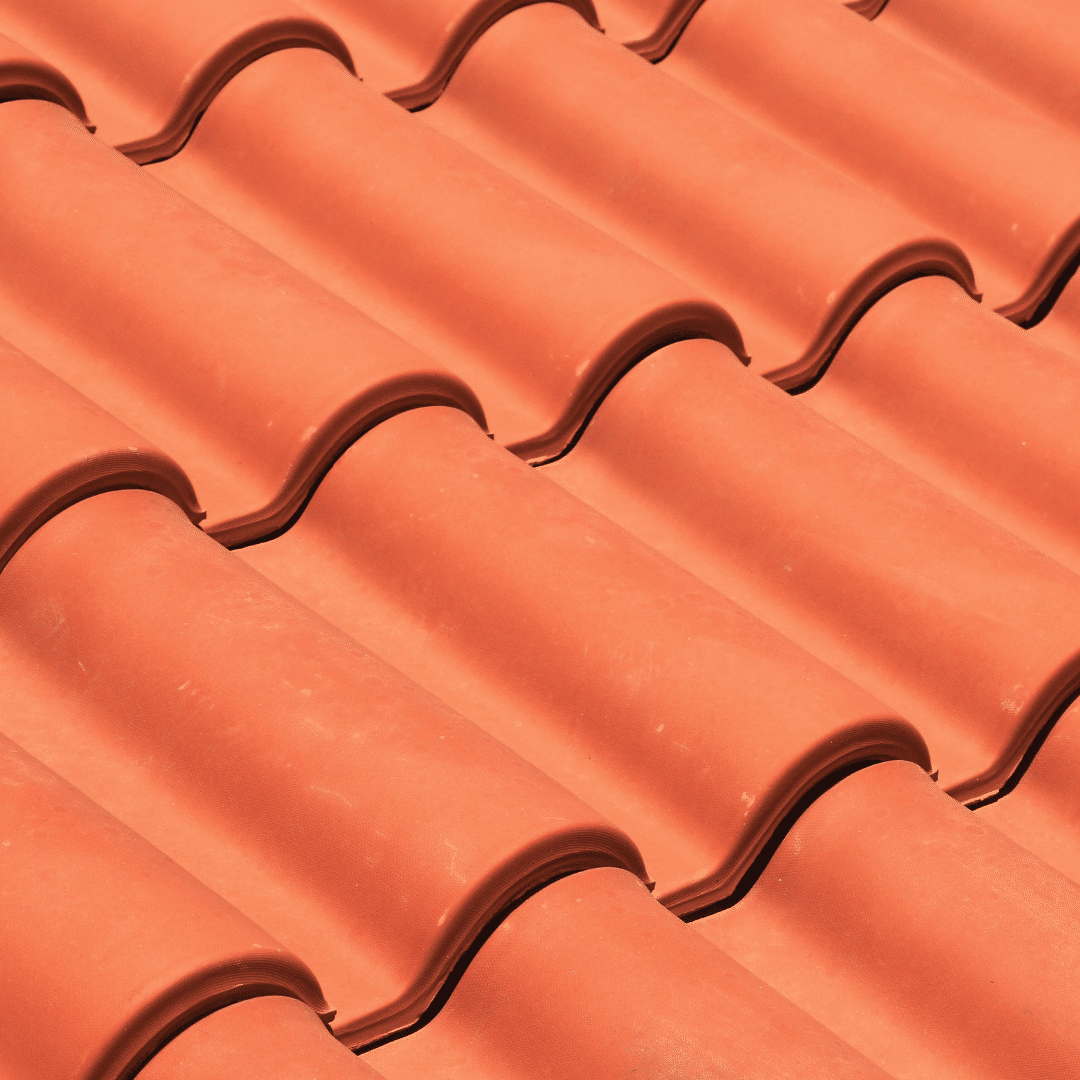
Tile Roof
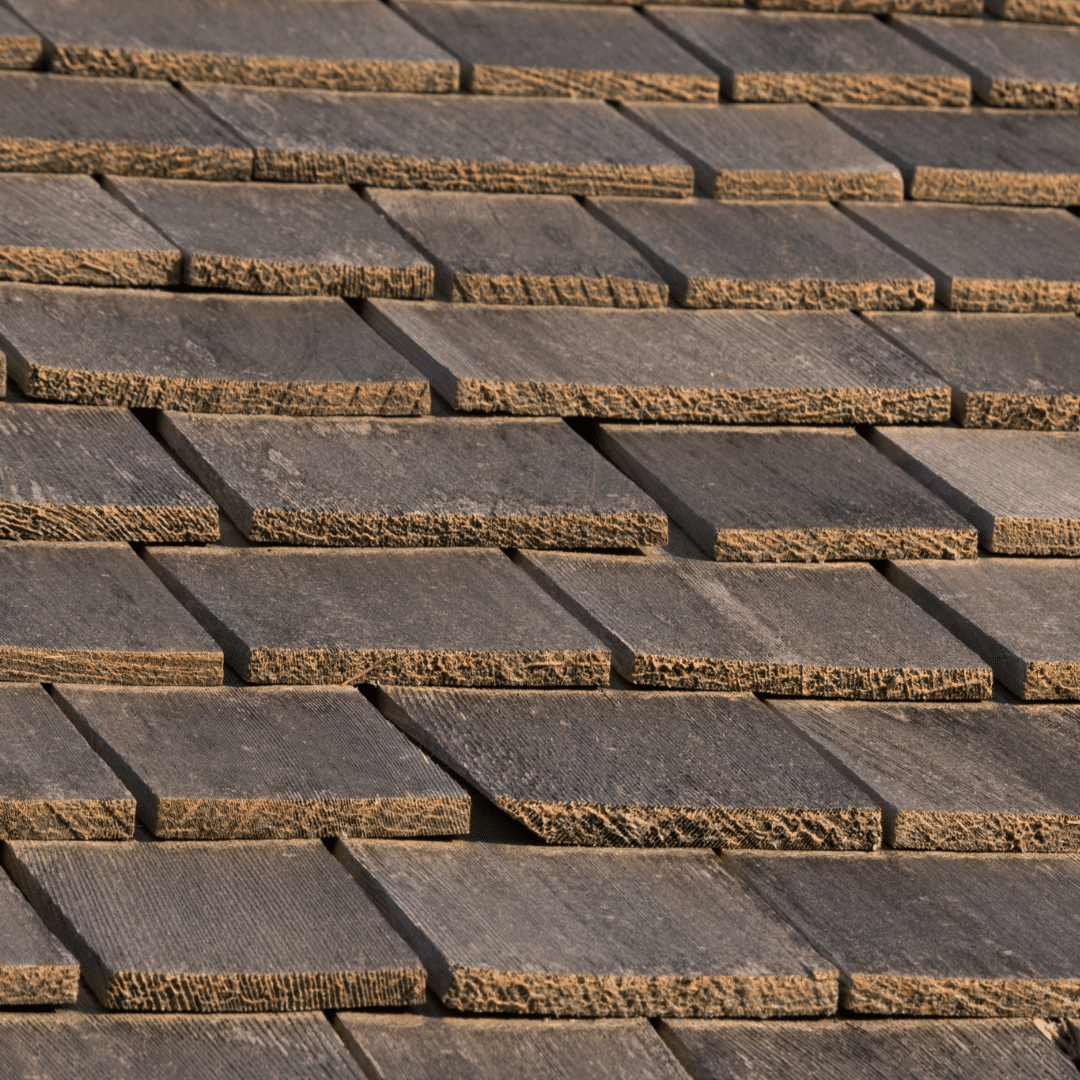
Wood Shingle Roof
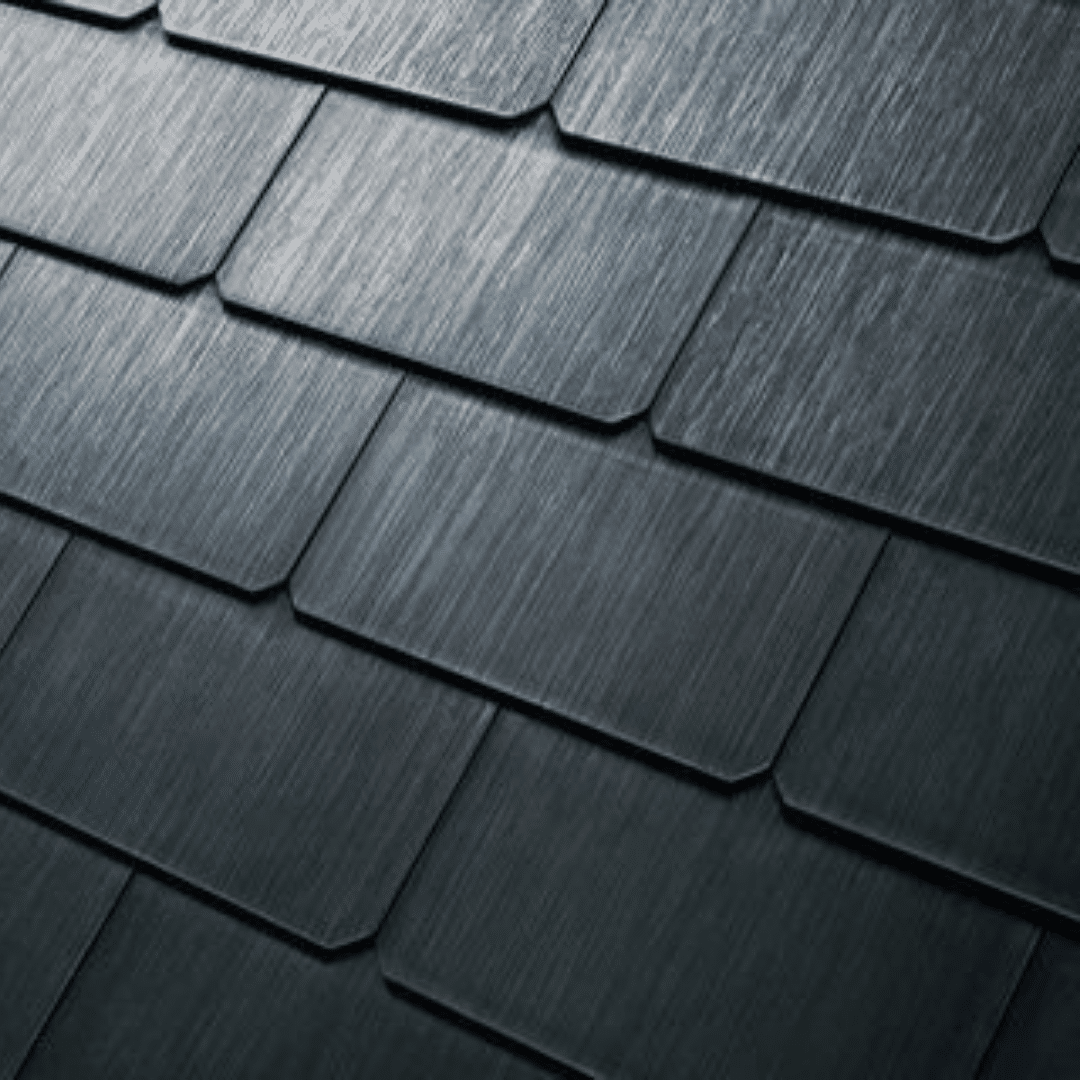
Tesla Solar Roof
Grid Connection
Are you planning to get your solar panel system connected to the grid? It will range anywhere from $2.7 to $4.7 per watt on average. A grid connection will be a helpful feature to generate sufficient power even during the nighttime or low sunlight days. However, grid connection will typically need a few more equipment, including meters and other relevant components. A licensed electrical contractor can discuss the essential regulations to shed light on the matter before connecting your solar panel system to the grid.
In contrast, most solar kits run on an off-grid system for lesser power needs in small sheds or tiny house settings.
How do Solar Panels Work for Your Home?
The basics of how residential solar panels work are already covered in the previous paragraphs. Now is the time to take a closer look at the step-by-step process of how solar panels work for your house:
Step 1: Solar panels at home absorb energy from the sunlight, converting it into DC electricity.
Step 2: Inverter technology transforms the DC (direct current) electricity into AC (alternating current) electricity. You will need AC electricity to power the majority of your appliances at home.
Step 3: Electricity will be evenly distributed throughout your home, giving power to your appliances, devices, and electronics.
Step 4: Should you have extra electricity from the solar panels, it will be re-routed back to the electric grid for storing.
Solar panels utilize the semiconducting material (silicon) to generate power. Once a silicon cell is exposed to sufficient sunlight, electrons start to flow, producing electric current. The process is commonly known as the photovoltaic effect.
Pre-installation Checklist for a Home Solar System
At this point, your home solar panel project might just be waiting for the signal. Here's a practical checklist to serve as a guide in the pre-installation process:
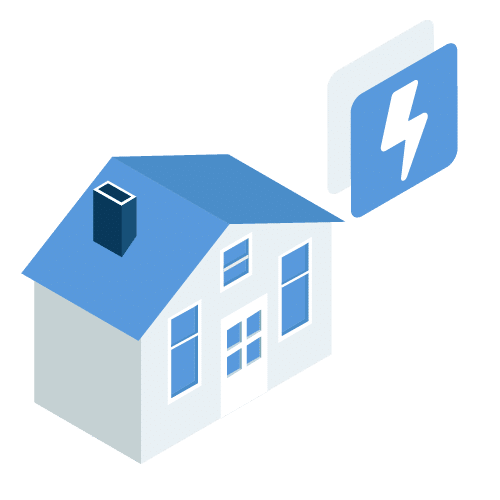
Measure your property's energy efficiency.
It's crucial to determine the energy efficiency prowess of your home before the actual installation. It allows you to measure your average energy usage and plan for any upgrades down the line. Some helpful resources to increase your home's energy efficiency are as follows:
Home Energy Audit
A detailed inspection will assess your average energy usage and determine if your home could potentially benefit from a solar power system. It helps figure out if the household is losing energy. If such is the case, you can talk with your contractor to formulate concrete plans for home energy efficiency.
Efficient Appliances
Consider investing in energy-efficient products, such as LED bulbs and environment-friendly appliances. Though it's understandable to hesitate to spend such a vast amount of money on expensive items, your long-term savings will increase given reduced monthly electricity bills. Hence, your upfront purchases will technically pay themselves in no time.
Assess the solar energy potential in your property.
Before giving the green light to your highly-anticipated residential solar panel installation project, it would be best to assess the solar energy potential in your property. Fortunately, advanced PV technology makes use of direct and scattered sunlight to generate electricity.
The defining factors in measuring your property's solar power depend on its average sun exposure and system size. If you want to determine your property's exact solar energy potential, use several mapping tools and services and talk to your local contractor.
Some other factors you need to take into consideration are:
Get different bids and quotes.
Before signing a closed deal, ask your contractor about any proof of licensure. A good reference would be the solar industry-standard certification from the North American Board of Certified Energy Practitioners.
Accordingly, you may also ask for word-of-mouth recommendations from your friends and loved ones who also recently made the switch to solar. Online reviews and testimonials are also a great resource to ensure you'll work with the best installer in your area.
No matter how tempting one bid is, ensure to gather at least three quotations for your home PV system installation. It will help you make an informed decision about your investment.
Some other crucial factors to consider are the following:
Remember that your bids must outline a total cost estimate in setting up a home PV system– including grid connection, hardware, permits, and warranty. For your reference, the most valuable metrics are the cost per watt and estimated cost per kWh when comparing different prices from several installation companies.
What are my Options for Using Solar?
If you’re worried about the expensive costs associated with a standard solar panel installation, the good news is– you’re not solely limited to an upfront purchase option anymore. Not all hope is lost even if you can’t afford the average $20,250 to $40,500 total initial expenses at the moment. Nowadays, you can apply for different solar initiative programs from which you may benefit from switching for your home energy needs.
Here are some available options you may want to consider:
Upfront Purchase
You may make a direct solar energy system purchase through cold cash or bank loan financing. It enables you to maximize the financial benefits such as tax credits and boost your home’s market value.
An upfront solar energy system purchase will be beneficial if:
Accordingly, you may also make a small profit off your new solar panel system at home. If you have unused electricity from your system, you may opt to sell this to your utility using a net-metering arrangement.
Community of Shared
Besides financial constraints, many households in the country shy away from a rooftop solar system since they have inadequate space in their roofs or they are merely renting the property. Generally, participants pool funds together to purchase a large-scale solar panel system that can generate sufficient electricity for many households.
A community-backed system proves to be a great choice if:
Solar Lease
Leasing a solar energy panel will also be another possible option to consider. In this case, you can benefit from the system’s solar power, which is technically owned by another person or entity.
Similar to property leasing, you will need to pay regularly to continue using the equipment. It often involves significant upfront expenses and monthly payments over some time. The monthly fees will be based on the average amount of electricity produced by the system.
Consider solar leasing if:
Power Purchase Agreements
Another method is to sign a PPA (Power Purchase Agreement), where you may host company-owned solar energy systems and purchase the generated power. A developer will offer to settle the system set-up, financing methods, and relevant permits with no additional costs.
Through this method, you may pay for the solar electricity generated by the system at a set price. It is usually available per kilowatt-hour of electricity.
It is a great option to consider if:
Solarize Programs
Another efficient way for neighborhoods to switch to solar would be through Solarize programs. In essence, a group of local businesses and homeowners gather funds to cover a solar panel system purchase at a discounted rate.
A bulk purchase allows more homeowners to benefit from solar electricity, especially with the model making the process more streamlined, increasing solar demand, and reducing installation expenses.
Solarize programs can be a good option if:
It would be best to consult your professional installer and local utility company to know the available programs in your area. Remember that every situation varies, and the best solar financing option for your property will heavily depend on many factors.
How Effective are Solar Panels?
Several major influencing factors measure the average amount of electricity generated by your solar panels. If you want to determine the efficiency of your home solar panel system, keep these factors in mind:
Capacity
It refers to the maximum electricity amount your system can generate given peak sun conditions. It is commonly known as rated capacity or output- where 1,000 watts (or 1 kW) of sunlight is equivalent to a panel's square meter. The majority of residential solar panel systems range between 1 kW to 4 kW average capacity.
Efficiency
Another way to determine how effective your system is to measure how much sunlight it may transform into electricity. Several conditions are not consistent for a solar panel system. There will be days when it falls off its maximum efficiency, with most domestic panels only have approximately 20% performance.
Materials
Your system's panel material type may also influence its effectiveness. In particular, mono panels generally use high-grade silicone material– which improves space and output efficiency. Meanwhile, poly panels may be less efficient, but they prove an excellent choice for homeowners on a tight budget.
Angle and Shading
Typically, a roof tilted at approximately 30 degrees angle will enable your solar panel system to achieve its best performance. Keep in mind that any shading may also negatively affect its efficiency. Hence, ensure to clear your roof of any obstacles and shadows (such as from tall trees).
Maintenance Costs of Solar Panel System
The expenses in setting up a home solar panel system don't stop at the upfront costs. You will also need to consider spending on ongoing maintenance and upkeep.
On average, maintenance-related work will cost you $100 per hour. The annual maintenance will combine to $18 per panel. When availing of the services of a professional repair technician, prepare to pay both the hourly rate and material cost. Since the upkeep varies from one domestic solar panel set-up to another, the total expenses may be somewhere between $100 to $3,200.
What are some of the most popular maintenance fixes for a solar panel system at home? Let's discuss them in detail below:
Removal and Cleaning
To remove an existing system, you can expect to spend around $2,500 to $2,800. The per-hour rate for a single panel replacement will cost you $135, with the replacement unit priced at $202 to $472. After removing the old solar panel system, you may also opt to give it a thorough cleaning– which runs from $14 to $27 for each panel. However, if you live in an area with frequent rains, you can count on the system to clean itself.
Meanwhile, dry or polluted environments will make your system prone to dirt and debris accumulation over time. It will also affect the efficiency of your solar panel system by up to 30 percent. With that in mind, it's always advisable to ensure annual cleaning and maintenance services for your unit for guaranteed energy optimization.
Broken Glass Panels
Repairing broken glass will only set you back approximately $20 for an epoxy bucket or up to $475 if you need to install a brand new panel. Removing the broken piece and replacing it with a new one could be tricky for newbies – as you will need to prevent interior water condensation and glass fogging.
It's best to consult a professional to carry out the process successfully. Experts can even help salvage a broken glass by applying epoxy or stained-glass tape to secure a fractured cell that's still generating sufficient output.
Cracked Panel
Fixing cracked panels or any cracks in your solar panels may cost you $270 for about 2 hours of professional labor. It doesn't include the expenses for new materials yet, which will depend on the severity of the cracks. Expect a total panel replacement to cost an additional $270 to $405. In some cases, a professional may rescue the unit by soldering the edges together.
Once you notice any visible crack in your system, it's best to work on addressing the problem immediately. Doing so will help you save on severe repair costs eventually. The cost of individual solar panels varies depending on several factors, but keep in mind that it's still cheaper to solder cracks than opt for total replacement.
Repair Loose Connection
Similar to repairing cracks, it will cost you $135 for 1 hour of loose connection repair. This common problem causes the connection to cut in and out, the panels heat and cool. You can quickly determine this if you strike the panels sharply. Typically, a trained professional will cut through the soft silicon material to work on the back of the cells.
Doing so makes any cuts and padding material to be easily fixed. Afterward, they will re-solder the equipment to complete the process.
How Much do Solar Panels Save?
In a year, expect to save between $880 and $2,025 once you make the switch to solar. In 25 years, that would amount to approximately $20,000 to $54,000 extra savings on your end.
Per State
Estimates will vary from one state to another, given the cost of electricity and average sun exposure in your area. You'll save more if you live somewhere in southern California or Florida than you would in northern climate locations. If you live in Washington, you'll save $7,500 with a solar-powered household (contrary to the average $14,600 cost).
The reasons behind this estimate are attributed to the area's lesser electricity rate and sun exposure. The current most efficient solar state in the USA is Massachusetts, with an average savings of more than $30,000 over 25 years. The state also has solar-friendly policies.
State Solar Panel Rebates and Deductions
Different states and localities also have their policies and incentives for solar power system installations. In some cases, utility companies offer up to 10% to 20% rebates on installation expenses. If you combine this with the Investment Tax Credit (ITC) incentive, your savings may add up to 50% at most.
Here are some general rebate guidelines for certain states:
State | Rebate Guidelines |
|---|---|
New York | A 25% tax credit for solar power systems. |
Massachusetts | Some utility companies offer a $0.50 rebate per watt, up to $625 per kW. |
Exempted sales tax for all solar energy products. Many utility companies also offer as much as $500 rebates on solar-powered water heating systems. | |
Washington | Several utility companies provide up to $2,000 rebates on solar panel home installation. |
Property Tax Exemptions by State
Benjamin Franklin once said: "In this world, nothing can be said to be certain, except death and taxes." As your property value increases, the same applies to your property taxes.
Fortunately, several states offer tax exemptions when it comes to solar system installation. Refer to the table below for property tax exemptions per state:
Solar Property Tax Exemption | State |
|---|---|
100% Tax Exempt | |
Local Exemptions | Alaska. Hawaii Now Hampshire. Ohio. Virginia |
100% exempt for 20 years | Massachusetts |
100% exempt for 10 years | Montana |
100% exempt for 5 years | Iowa. New York. North Dakota |
100% exempt until 2025 | California |
80% exempt | North Carolina |
System-based exemption | Illinois, Nebraska. Tennessee |
Tax exemption of 550 000 or 70% of total property value | South Dakota |
No exemption | Alabama Arkansas. Delaware. Georgia. Idaho Kentucky. Maine. Mississippi, Nevada. Oklahoma, Pennsylvania. South Carolina. Utah Washington West Virginia. Wyoming |
Several studies have proven that a home solar panel installation will raise property values. In particular, one study by the Lawrence Berkeley National Lab (LBNL) determined that a standard system can increase your home value by $15,000 more.
Keep in mind that energy-efficient features are a good selling point for properties in the real estate market. Not to mention, it is a money-saving addition in the long run. Of course, this would still depend on your property's location. If you live in sunny California, your home value will significantly increase. For cloudy, rainy regions such as Washington– the rise will take on a lesser margin.
Refer to the table below for a quick overview of the average home value increase based on size according to LBNL:
Solar Panel System Size | Ave. Increased Home Value Amount |
|---|---|
4 kW | $23,644 |
6 kW | $35,466 |
8 kW | $47,288 |
10 kW | $59,110 |
Note that the average amounts are somewhat on par with the installation costs of a home solar panel system. Consider it a significant factor in deciding to make the switch.
Factors Affecting the Home Value-add of Solar Panel System
Several factors may affect the home value-add of residential solar panels. Listed below are the most defining aspects for your reference:
Location
The geographic location of your property will define how much you'll benefit from the residential solar panel system. Keep in mind that different areas have various electrical costs. If your state has higher electricity costs than average, you can enjoy a more excellent value from solar panels at home.
Installation Expenses
Another important factor to consider is the total expenses of a solar panel system installation in your location. If you are planning to place your property on the market, prospective buyers will undoubtedly consider your listing given it already has an efficient solar power system installed.
Age of System
Naturally, if the home solar system has been around for long years, its value will depreciate. The average life expectancy of most solar panels is approximately 25 years. If you have an older system, it will have a lesser added value as buyers may likely address some repairs or parts replacement at some point.
System Output
Installing a large-sized system. which can generate more energy, will increase the home value-add of your property.
Are Solar Panels a Great Home Investment?
At one point, many homeowners wonder if their property is a good candidate for a solar panel installation.
Questions such as: is my roof suitable for a solar panel system? Will I save more money if I make the switch? Will my system accommodate my home power needs? It's wise to weigh the overall impact of solar on your property's value before signing a contract with a professional solar installation company. (Related article: Solar Power For Homes: Is It Worth The Investment?)
Some impactful factors to help you with the decision are as follows:
Total Monthly Utility Bills
If your primary reason for going solar is to save money in the long run, conduct an evaluation first. Each month, homeowners with high utility bills can benefit from a better ROI rate for a home solar panel installation.
Sufficient Sunlight Exposure
Simply put, some properties are blessed with a location that is very conducive for solar panel systems– while others aren't. Suppose your house is located at a prime angle to harness energy from the sun. If that's the case, going solar would be a great choice. Start by checking online solar panel suitability checker tools such as Google's Project Sunroof.
Eligibility for Financial Incentives
As mentioned above, several American homeowners may claim a federal solar tax credit, local state rebates, and other financial incentives for a home solar panel installation. If your budget cannot accommodate hefty, upfront costs– you may look into low-interest loans for solar in your area.
Solar Batteries
In discussing a solar PV system, you will surely stumble across a solar battery storage system that costs $44,500 and $63,800 on average. These batteries can store any generated energy from your home solar panel system– which you can use later. If your panel runs out of sufficient power from heavy usage or extreme weather conditions, solar batteries are there to your rescue!
It is an excellent addition for homeowners with an off-grid system or those who opt to store excess energy rather than returning it to the grid (net metering) for small bill reductions. Any surplus energy from your solar PV system will accumulate into the battery– which will make it ready to use on-site whenever you need it.
Selecting the battery type for energy storage purposes is a decision you shouldn’t take lightly. Here are some important considerations to keep in mind:
Battery Lifespan
Generally, a solar battery lasts for about 5 to 15 years. With the advancement in solar panel technology, their average lifespan is expected to extend significantly.
Batter Power Capacity
It refers to the maximum electricity amount your solar battery can keep. These batteries are stackable, so you can have several storages if you want to increase your system’s capacity.
Depth of Discharge (DoD)
It measures the extent you may use your battery proportionate to its capacity. At 100% DoD, you can use your total battery storage amount. With a 94% DoD rate, you can use up to 2.35 kWh of your 2.5 kWh battery.
Warranty
Battery warranties are usually outlined in cycles or years, usually at a ten-year cover period. In most cases, the battery manufacturer covers the warranty.
Common Solar Battery Types
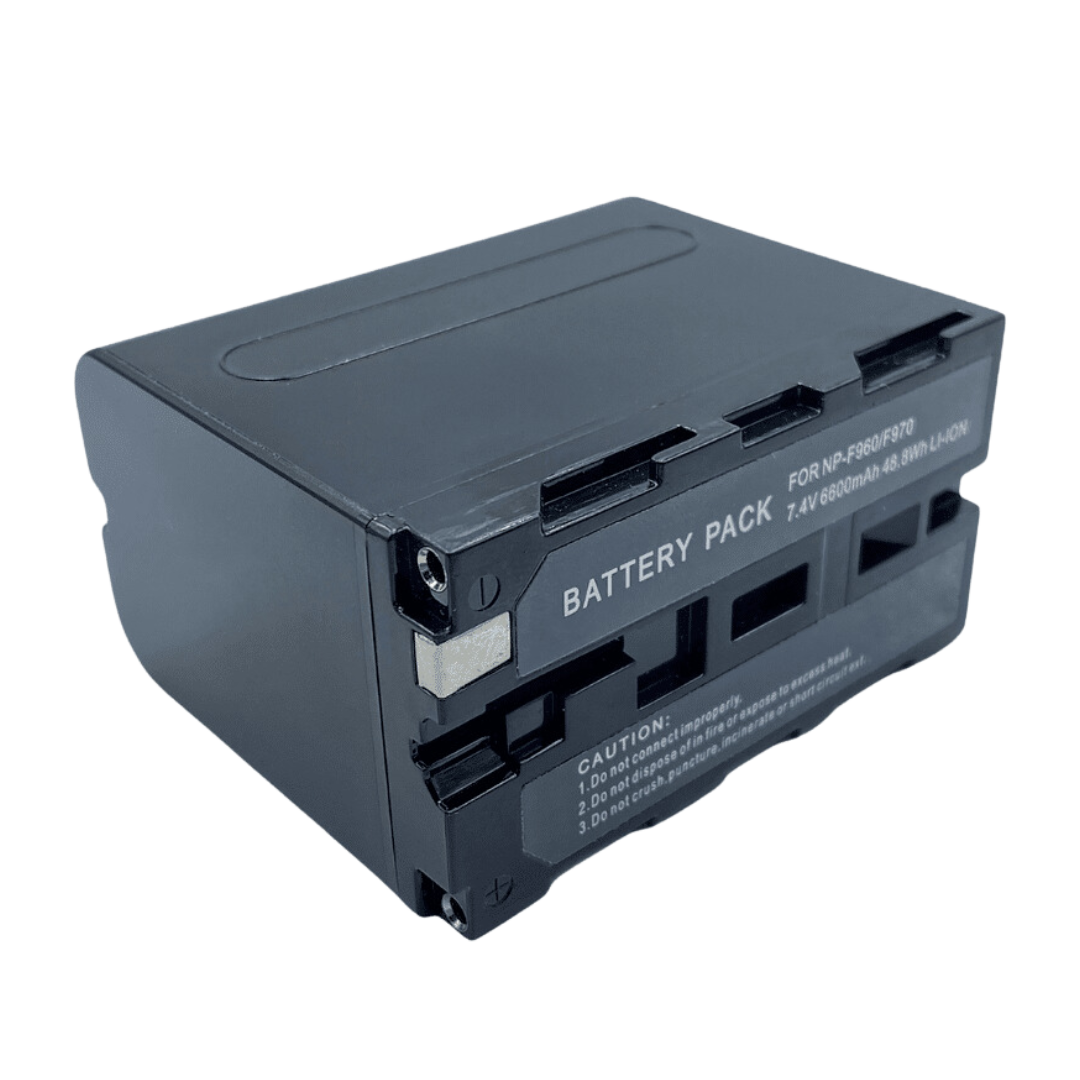
Lithium-ion
Most of the new home batteries in the market are lithium-ion types. If you want a solar battery with a high DoD and reliable life expectancy, this solar battery type makes for a great choice. These batteries are highly compact, and they cost more than other types, such as lead-acid batteries.
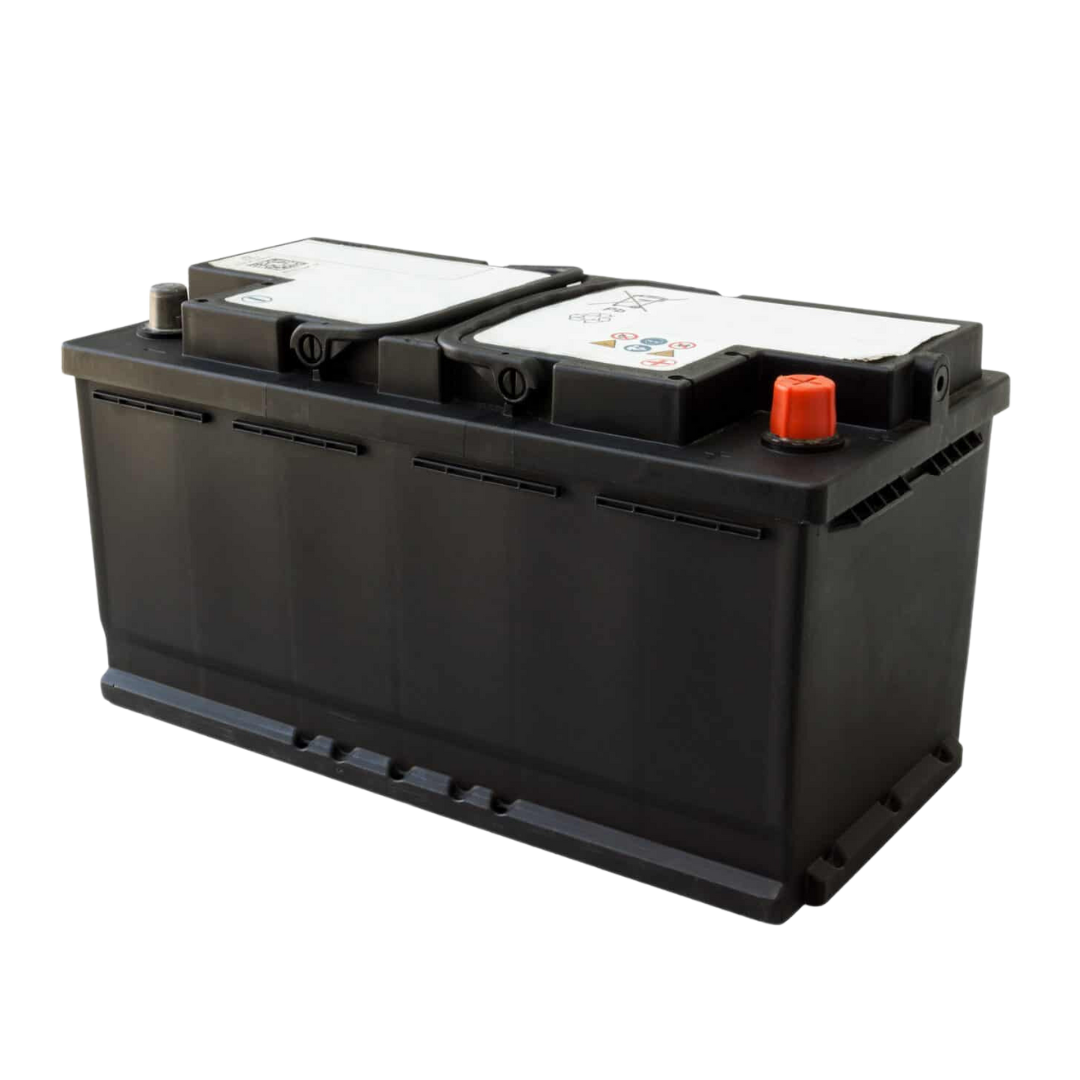
Lead-acid
These solar batteries are the most cost-efficient option for homeowners on a tight budget. Lead-acid batteries have been popularly used over the years, especially for home off-grid solar power systems. The drawback? It is increasingly becoming outdated technology.
Having solar batteries at home is one step closer to energy independence. If you want to maximize your home's solar power potential, consider investing in this technology. You will no longer worry about running out of solar electricity on days with severe weather conditions. Count on its stored solar energy that’s readily accessible the moment you need it. How convenient, right?
Project Process of Solar Panel Installation
If you're considering a home solar installation project for quite a while now – you are probably curious about what goes down in the installation process. There's quite some work involved before the solar panels are set up on your roof. We'll streamline the general step-by-step guide below for your reference:
Engineering Site Visit
Upon signing a solar contract, expect an engineer to pay an on-site visit to your property. They are in charge of conducting necessary evaluations to ensure your new solar energy system will function without fail. Generally, they work with your installer for a streamlined, uniform project – although it can also be an independent provider in some cases. The engineering site visit will begin shortly after signing a contract to keep the ball rolling.
The current roof condition and the home electrical panel will be evaluated by a technician accordingly. It is a crucial step to ensure your new system's maximum efficiency and safety. If you are advised to do an electrical panel upgrade, it's usually because your new solar panel system needs higher amps of current. Hence, it's better to increase its ampere capacity. Note that an engineer visit is different from a general site visit. The latter is when an installer inspects your property to determine the ideal system size for your needs, considering various factors such as your roof type, shading, and the like.
Permits
Since a home solar panel system is a hefty investment, you can expect the project to require tons of relevant paperwork. A good thing about hiring professional services is that your installer will deal with securing all necessary permits. It includes all applicable local solar incentives (federal ITC, financial incentives, government rebates, solar programs, and solar renewable energy certificates (SRECs).
Aside from incentives application, other necessary paperwork such as local building permits also needs to be secured. Keep in mind that permits vary depending on the location of your property. Some areas require at least three feet of clear space around the solar panel system, while other locations allow total panel occupancy on your roof surface. Ideally, your installer will be aware of all the relevant requirements and restrictions in your area.
This step will heavily depend on how fast your installation company can finish submitting all paperwork. Nevertheless, it's always a good idea to check in every once in a while to track progress.
Equipment Delivery
After securing all necessary paperwork and permits, it's time to place an order for your equipment from solar distributors across the country. Usually, a solar company will lay out all the necessary equipment in your home solar panel system before the contract is finalized. For homeowners who want some wisdom on selecting the best equipment in the market, pay attention to the quality of your chosen solar panels and inverters. These two main components will significantly define the efficiency and performance of your new home solar system.
These two main components will significantly define the efficiency and performance of your new home solar system. You can ask your installer for personal recommendations on the best brand for your needs. Some may also offer several alternatives should you want to consider a few choices.
In choosing a brand, keep in mind factors such as efficiency, durability, and warranty. It would also help to do quick online research on the top-rated solar panels in your area. Doing so will help you narrow down your list further. Expect the inverter, panels, and other equipment to arrive on the exact date of installation. It happens once all the previous paperwork has been settled, which runs for about a month or two. The waiting period until installation day will also depend on your contractor's current pending projects. If you want a quick home solar panel installation, schedule the project sometime in the winter as it is the off-peak season for most solar companies.
Installation Process
This stage in the project process involves the actual installation of your residential solar panel system. You'll finally get a glimpse of what your roof will now look like with all the solar panels set in place! First, a technician will prepare your roof to ensure all tiles are correctly attached. Next, electrical wires are connected to the panel and the power system. Once the electric wires are all completely sorted out, tracking is installed to support the panels. It's usually the only equipment to be attached to the roof.
After ensuring the racking is evenly attached, panels will then be placed accordingly. The final step of the system set-up involves connecting the inverters to the panels- which converts direct current (DC) into alternating current (AC) energy. Then, you can now start converting sunlight energy into usable electricity to power your home.
The entire installation process typically takes 1 to 3 days, depending on the size of your solar panel system. Another factor that may affect the duration will be adding a power meter for net metering, which adds a few more hours to the process.
Approval and Interconnection
Finally, you are now one step away from generating clean solar power directly from your roof. You will need to secure approval from a local government representative before connecting the solar panels to the electric grid. Usually, a post-installation inspection will take place to ensure your installer sets up the system properly. It includes double-checking all connected wires, sturdy mounting placement, and ensuring the system follows applicable electrical and roof setback codes.
After passing this inspection, the official grid interconnection will push forward. If there are no faults or issues in the installation project, you can expect your panels to function after the final connection. The waiting period for local government and utility company approval usually takes at least two weeks to one month. With that in mind, installing a solar panel for your home doesn't happen overnight. It involves an intricate process that may run for one to three months before you can start producing clean energy for your home's electricity needs.
Pros and Cons of Solar Energy
With over a million residential solar installations in the country, solar energy continues to soar in popularity. This clean, plentiful, and money-saving home energy source is only expected to grow in numbers for the next few years.
Let's take a look at the benefits and drawbacks involved in making the switch to solar:
Pros of Solar Energy
Why are over a million households in the country making the switch to solar? To give you an idea of the several benefits of a home solar system, we've listed down the most prominent ones below:
Environmental Benefits
Solar energy can reduce pollutants and greenhouse gas emissions, lessening your home's carbon footprint. More environmentally conscious homeowners are leaning towards this clean energy source. Every kilowatt-hour (kWh) of solar energy produced may reduce greenhouse gas emissions.
Enormous Resource
Majority of the states in the US have enough means to produce solar resources. In fact, a single noontime hour during the summer season can cover the country’s annual demand for electricity. More importantly, places like the Pacific Northwest and Alaska which are known to have low solar resources can still experience significant cost savings.
Cons of Solar Energy
Like every alternative energy source, several drawbacks are associated with having a solar energy system at home. Here are some of them:
High Upfront Costs
As previously mentioned, the initial costs involved in a residential solar panel installation are a hefty investment. Homeowners will need to pay somewhere between $20,250 to $40,500 on average. The upfront costs cover necessary solar panels, mounting, inverter, wiring, and other hardware. In most cases, it also includes the permit fees and some maintenance costs.
However, it does not include the additional costs of purchasing solar battery storage (from $44,500 to $63,800). Though this feature is not required, homeowners who need to supplement their residential power needs will need one to connect to the local energy grid seamlessly.
Potential Roof Damage
Poor solar panel installation may place your roof at risk of damage. In particular, roof holes may be the reason for a potential water leakage which would vandal your home from inside and out. It's why it is crucial to do your research on installation companies, ensuring that the one you'll work with has good positive testimonials to prove the quality of their work.
Standard solar panels require to be mounted securely due to their massive weight. Suppose your roof is in poor condition with plenty of weak spots, then it is prone to crack eventually because of the additional mass.
Insufficient Sunlight Availability
The location of your property will determine the total efficiency of your solar panel system at home. Keep in mind that the amount of annual sunlight exposure depends on the latitude you're located.
If your house falls away from the equator, you can expect a consequent decrease in your solar energy efficacy. Your system will also deteriorate gradually from the harsh UV rays from the sun. Similarly, severe weather conditions such as hail, strong winds, and severe snow may also put your solar panels at risk of damage.
Choosing Between Solar Contractors and Companies
Deciding between a local installer and a large, nationwide solar company will be entirely up to you. Can you use some savings from the installation expenses? Do you prioritize the quality of the service more, without minding the costs?
Usually, the choice boils down to large, national companies that work throughout the country or small-scale solar companies operating in a specific locality or region.
To help you make an informed decision, refer to the table below to determine the pros and cons of choosing local companies or installers in your area:
Pros and Cons of Hiring a Local Solar Installation Company
The fair price points are because most local companies face less pressure and red tape on service pricing and profit criteria than large, nationwide companies.
Benefits | Drawbacks |
|---|---|
Wide range of product options | Lesser business stability |
Smaller companies also operate in a relatively tight-knit working environment. It usually motivates employees to do a fantastic installation job and encourages teamwork. Should one team member fail to live up to the company expectations, the company leader can easily be held accountable to improve their craft and do a better job moving forward.
Pros and Cons of Hiring a Renowned Solar Company
Large companies on a national level of operation boast more resources and successful projects. However, their services aren't offered at a fair price.
Benefits | Drawbacks |
|---|---|
High business stability | Fixed service prices |
One study by the National Renewable Energy Laboratory (NREL) proved that large-scale solar installers typically give higher quotes 70% of the time compared to local companies. These quotes also came at an additional 10% more than the average price point.
Large firms are expected to adjust their service pricing according to their financial goals and current market share. Many of their contractors are also publicly traded, and they are accountable for keeping a specific profit margin to their shareholders. If budget is not an issue on your end, signing with a national solar installer is one excellent investment to make.
So, how do you determine the best choice for your home energy needs? First, prioritize your main priorities, current financial capacity, and expectations. These key factors will help you make the ideal choice for your situation. At the end of the day, it's better to choose a solar installation company that guarantees exceptional service and quality work at a relatively fair price that won't have you breaking the bank.
Checklist in Choosing a Solar Contractor
Running a background check and browsing positive online testimonials – all of these steps may be overwhelming for an inexperienced homeowner regarding home improvement projects.
With that in mind, here are some guidelines for choosing a reputable solar contractor in your area.
Additionally, here are some guide questions you need to keep in mind to figure out if a particular solar company fits what you're looking for:
It is crucial to ensure you're signing with a reputable solar company in your area to make the most out of your new residential solar panel system. There are so many irresistible sales pitches and offers that making the best choice can be somehow challenging. Nonetheless, the guideline above may help ensure you're making the right decision.
Solar Panel: Frequently Asked Questions (FAQs)
In every home improvement project, damaging other parts of your house results from improper installment methods. Therefore, installing solar panels can’t damage your roof as long as you invite a qualified professional to do it for you.
In an age where we can easily access do-it-yourself videos on the internet, some people might be capable of installing solar panels themselves. However, we highly recommend leaving this kind of job to licensed professionals to prevent risking your safety and additional costs due to an improper installation.
The total generated energy from solar panels is defined by several factors such as sun hour, orientation, and shading. On average, solar panels can still produce 250 to 400 watts of power per hour in today's market.
Solar panels will require you some investment upon purchase, but they can save you a lot of money in the long term. Having it installed can give you enough power to decrease electricity costs from your monthly bill.
For most homeowners, solar panels are safe to use and do not produce any hazardous chemicals or create a danger of any kind. It is probably one of the main reasons why solar is definitely worth your investment.
Studies show that the efficiency level decreases around 0.5% annually and has to be replaced once it dropped below 80%. Computing through these figures, your solar panel might last for at least 40 years before you can decide to purchase a new one.
Solar panels are durable and made to last. On average, a solar from today’s market may last for about 35 to 40 years when it is not physically damaged.
Final Thoughts
More than a million households in the USA have already made the switch to solar. And it doesn't stop there, as more homeowners are continually expressing interest in a residential home panel installation. Think of this alternative power source as your way of giving back to the environment, given that it produces clean and green energy.
Additionally, you are also future-proofing your property by making the switch to solar. California and Maine already issued mandates for all-electric systems in 2020 to reduce individual carbon footprint. The trend of renewable living and all-electric systems will only continue to soar in popularity in the long run. If you’re ready to make the switch, contact your local solar installation company today!


